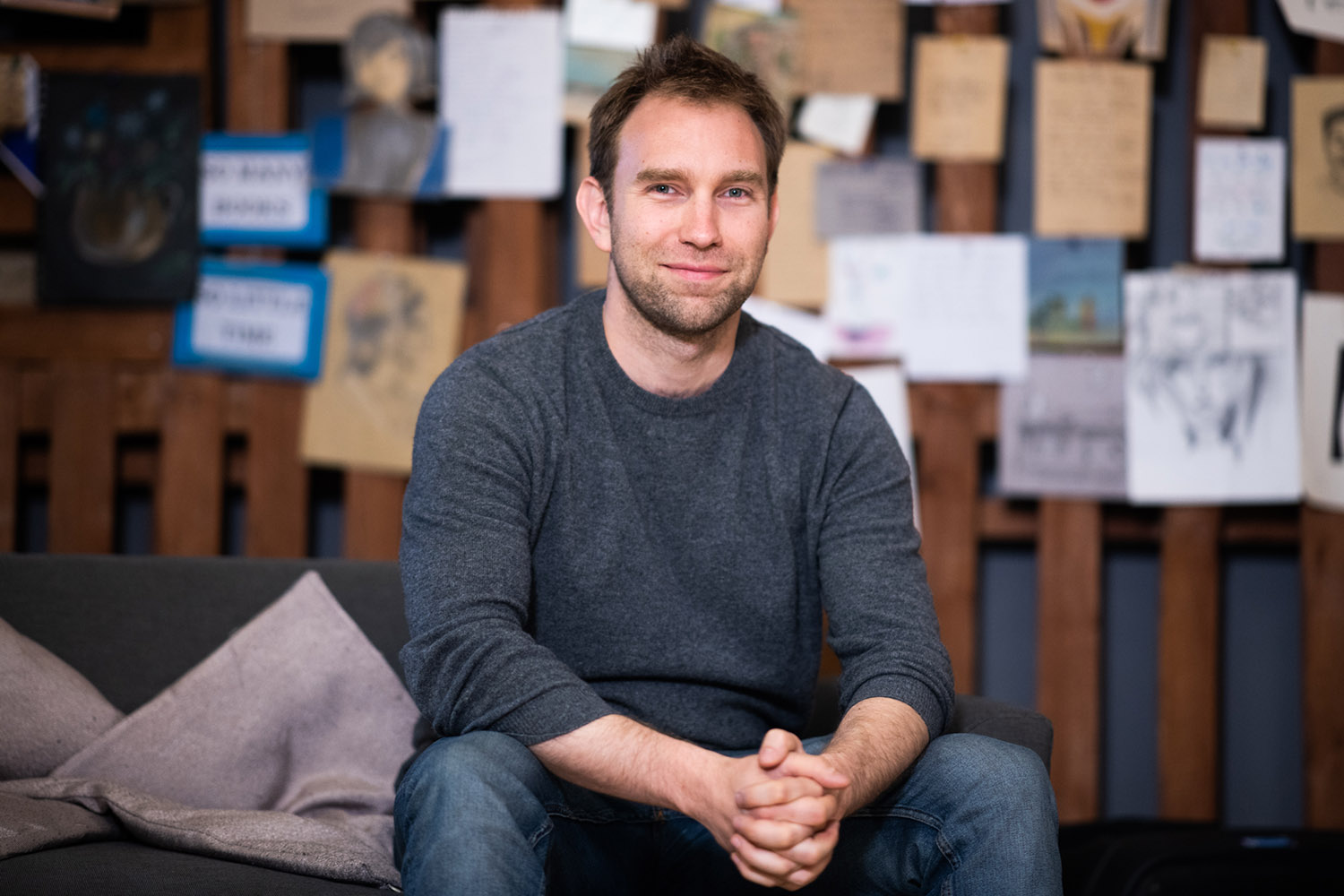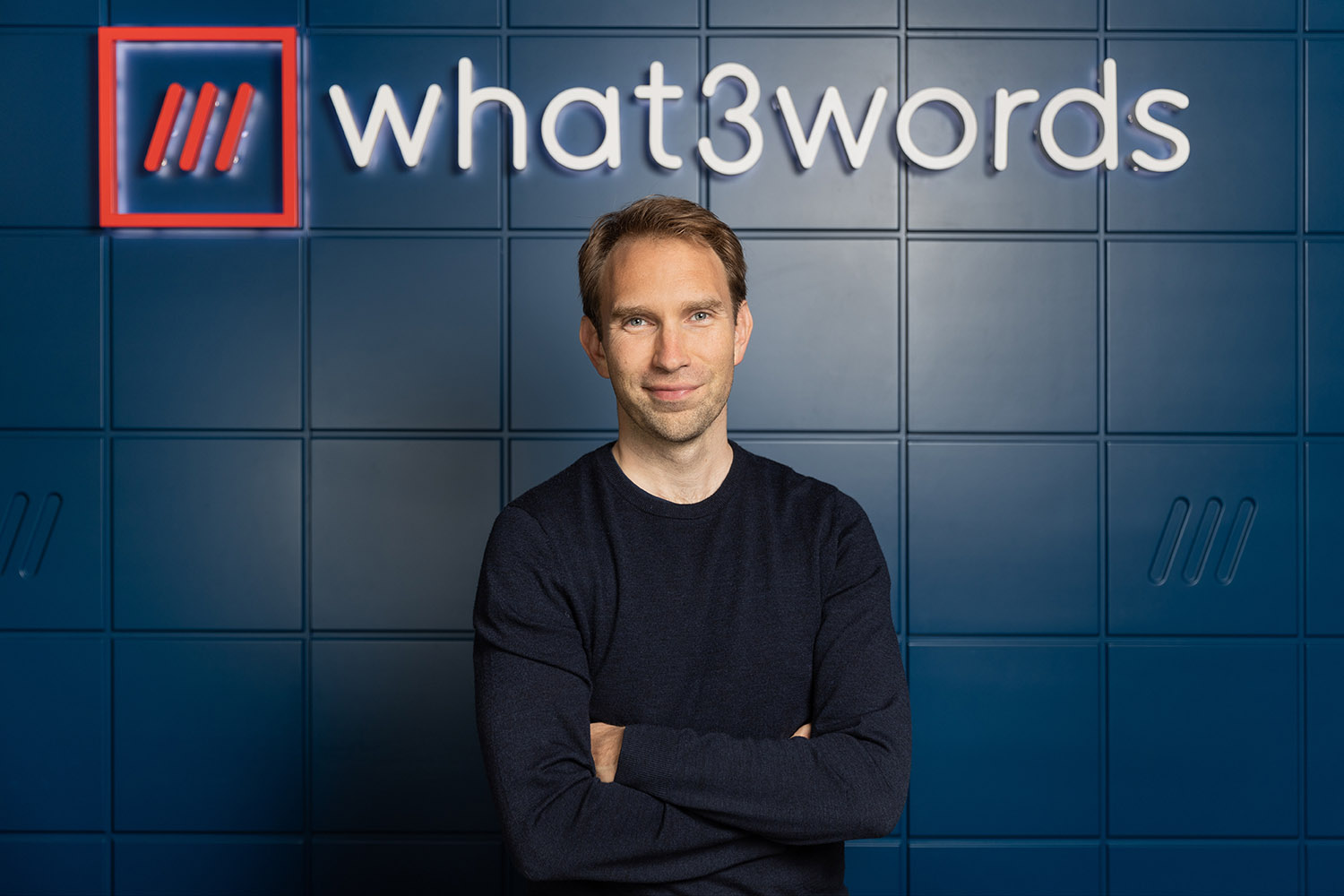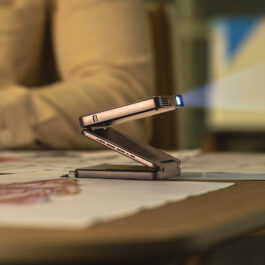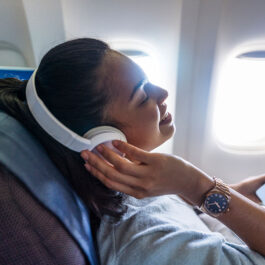The ability to see the world differently is the hallmark of many visionaries, but that is literally the case for what3words co-founder Chris Sheldrick. Described as ‘a simple way to talk about precise locations’, what3words has been busy transforming the way that the world thinks about and manages addresses and geolocations since its launch in 2013. We spoke to the company’s visionary CEO and co-founder Chris Sheldrick to get the inside story on the revolutionary app and how it is facing the future.
The approach of what3words seems so beautifully simple: divide the world into 3-metre squares and attribute a unique three-word combination to each square.
Did it, therefore, feel like a true ‘Eureka’ moment when you first realised that 40,000 words would be sufficient to generate these unique combinations for the entire planet?
CHRIS SHELDRICK: The creation of what3words actually stems back to my previous career in the music industry. While organising live events around the world, it didn’t take me long to discover that people struggle with poor addressing every day. So, to get people and equipment to the right places, and on time, I tried sharing GPS coordinates. But entering 16 numbers into a device, or even sharing them over a phone call, was really unreliable.
So, I decided to find a solution. I discussed the idea of a more usable and less error-prone version of the latitude and longitude coordinate system with a mathematician friend, who subsequently wrote an early version of the what3words algorithm on the back of an envelope.
It was exciting to realise that anywhere in the world, whether it’s a specific spot on a remote beach or a parking space in a busy lot, could be communicated with just three simple and unique words from the dictionary.

What was people’s initial reaction to the concept? Did the first people you spoke to immediately grasp the potential of what3words or did it take time to convince people of the advantages?
Changing human behaviour and challenging the status quo anywhere in the world, and in any category is difficult. what3words is a fairly unique concept, and with so many people regularly experiencing problems with addresses, many people are drawn to its simplicity above all else. Being so unique has really helped drive network effect – people seeing what3words used first-hand is the biggest and best driver to encourage others to take a look for themselves and try out the system.
There are people and communities all over the world who would benefit from a more precise and reliable addressing solution. That could be because they live on a new-build estate without a registered address, or in a community that doesn’t have addresses at all. And I can guarantee that almost everyone can think of a time that a delivery didn’t make it to their front door, or they got lost looking for the correct entrance to a building.
So even though there might be some people who don’t have a need for what3words, there will always be others that genuinely do – and that’s why the technology exists and is now being used by millions of people all over the world.
Were the full range of potential applications – especially life-saving applications, immediately clear – even to you – when you started out?
what3words started as something I created with the hope of getting bands to their gigs on time. But it really didn’t take long for us to realise that the technology had much more potential than just this.
Take the Mongol Post as an example. In 2016, it became the first postal system to adopt what3words as a national addressing standard, to complement its traditional addressing system. Mongolia is a country that’s home to vast areas of unaddressed land, so what3words helped bring a transformative level of precision to their nationwide deliveries.
Then of course there are more obvious uses of what3words – such as emergency services, logistics and deliveries, navigation and ride hailing. And we are constantly uncovering unique and quirky use cases too. For example, what3words is being used every day by birdwatchers to cavers, and horse riders to coastguards. Seeing the growing number of ways our technology is being used continues to be one of the most interesting and amazing things for us.

There are numerous stories today of people who were lost or in danger, but were able to use what3words to notify emergency services of their location. Or NGOs using it to help people in crisis areas. How did you feel the first time you heard of someone being rescued using your app and are there any other such stories that stand out in your mind?
The first time the use of what3words by UK emergency services hit our radar was in 2018 in Hertfordshire, when we spotted this tweet from Herts Fire Service.
The same afternoon I stood in the Herts Fire control room in Stevenage and spoke with their team directly about how we had been used, and they have been hugely supportive throughout our nationwide rollout across UK emergency services, where we are now used by 85% of police, fire, and ambulance services. We’ve also been adopted by emergency services across the globe too.
It’s always very humbling to hear from people who have used what3words in an emergency situation. It has been used for everything from reporting fires and rescuing pets to locating callers mid-heart attack. For example, last year, a young man called Joe Mason called the ambulance from the side of the motorway while his dad was having a heart attack in the car. After providing his what3words address, the ambulance arrived in a matter of minutes, saving his dad’s life from what could have been a fatal heart attack.
We’ve heard about rescue stories from all over the world too. In Tennessee, what3words helped firefighters find some missing teenagers lost in a park. In Germany, a control room in Bavaria used what3words to rescue a victim who had fallen off his mountain bike and fractured his ankle on a hiking trail to the Spitzberg Geroldsgrüner Forest. In India, the technology helped the emergency services save a victim caught between a truck and a bus on the Sinnar Ghoti Highway.
Having a breakthrough idea is one thing, but ensuring its adoption is another thing entirely. How difficult has it been to keep building awareness of what3words? Has it been a straightforward process or have there been bumps along the way?
The UK is our most mature market with what3words now a household name. But building awareness isn’t easy, and for a technology like ours we need two things for success and adoption. The first is widespread consumer usage to prove to businesses that it’s a valuable offering for their customers. And the second is for businesses to use and accept what3words addresses so consumers believe it’s impactful and credible. Seeing our technology in their car navigation systems, or at an e-commerce checkout page helps what3words become a very normal part of everyday life.
The approach is twofold. We want to integrate with the leading and most forward–thinking businesses all over the world so what3words becomes an indispensable part of their everyday operations, whilst people all over the world download and start using our free app in their daily lives.
what3words works with and is backed by a number of major organisations. How important was it for you to build a broad network of partners rather than to collaborate with just one partner or even to sell your idea to a single organisation? Has this approach been important to retain what3words’s independence and encourage usage of the app?
It’s incredibly important to build an ecosystem. While many businesses focus on a particular industry or market, we’ve made it a principle for our solution to be accessible to everyone, everywhere. This involves understanding the complexities of many cultures and ways of operating, but we have risen to the challenge, and I’m lucky to have an amazing team who can work successfully in any market – from Mongolia to South Korea, Vietnam, the Middle East and the US – to bring what3words to communities that need it most.
what3words is a global solution, so another big part of building a broad network of partners and an extensive ecosystem is ensuring the technology is easy to use and communicate by anyone, anywhere. While we’re still on a journey, what3words is now available in 54 languages, meaning five billion people can use it in their native tongue.
View this post on Instagram
View this post on Instagram
You point out that around 4 billion people worldwide don’t have an address, which is an astonishing total. How much satisfaction does it give you to transform so many aspects of their lives by giving them a unique address for the first time, and is this issue – particularly for people in rural areas, something that you personally identified with?
It is – and without an address it can be difficult to vote, register a birth, or get access to healthcare. That’s why there’s so much value in a system that gives people and communities a simple address in a language that they understand.
Our technology has been used by communities all over the world in need of a more precise addressing system – from helping to restore telecoms in Ecuador following the 2016 earthquake, which resulted in more than 26,000 people being relocated into shelters, to enabling the Philippine Red Cross to coordinate aid distribution following Typhoon Haima later that same year.
what3words has also been employed by non-governmental organisations in non-disaster situations too. In Durban, South Africa, NGO Gateway Health Institute, which provides emergency support vehicles for people living in the townships, trained local young people to help residents discover and use their what3words address. The local emergency services were also trained to quickly find and navigate to any what3words address they are given over the phone or via SMS.
One of the things I love about what3words is its simplicity. It means that absolutely anywhere in the world, regardless of how rural or remote, can be easily identified, found, and shared with just three simple words. I actually grew up in a rural area – on a farm in Hertfordshire. A lot of my childhood was spent flagging down lost delivery drivers, as the address to our home actually directed people to the house across the road, or occasionally a nearby pond. It was as if I was primed for what3words right from the beginning, having lived in rural Hertfordshire with no one ever finding us.
what3words is used by millions of people worldwide. Aside from using the app to identify home and work addresses, what are the most typical uses of the app?
The what3words ecosystem is vast, people are using the technology every day to meet friends in parks and on beaches, to share running and hiking routes and to address large locations like sports stadiums. Some more unique examples include mushroom picking, tree surveying and magnet fishing!
But undeniably our three biggest use cases are in the automotive world, for deliveries, and emergency services. We’ve been integrated into some of the biggest automakers in the world, including Mercedes-Benz, Jaguar Land Rover, Lamborghini, and Mitsubishi, so drivers can navigate to precise locations with ease.
For deliveries, leading companies such as DHL, DPD and Evri use what3words to ensure deliveries get to the correct destination no matter how hard it is to find. Brands such as Boohoo.com have added what3words to their checkout page to make it really easy for customers to specify exactly where they want their orders to go.
And, of course – one of the most compelling use cases of what3words is for emergencies. In fact, emergency call centres in the UK, US, Australia, France, Germany, Belgium, Austria, Singapore, Canada, India, and South Africa have all adopted our technology to locate victims with pinpoint accuracy.
There is a delightful surprise element in discovering the random three-word combination of a particular location, many of which are humorous and memorable. Are there combinations for specific locations that stand out in your mind or that most amused you?
what3words was never intended to be fun, but purely functional. In fact, the words are shuffled by our algorithm and not assigned manually, and they are specifically not intended to convey any meaning to a location.
But even when we made the first version ourselves, the first thing we did was look up our own houses to see what the words were. It certainly makes people engage with it. Sometimes people go and buy a sign for their house with their words and hang it up, people have even started tattooing them – the words for where they got married etc, so it’s become quite cool.
But, if I think about my favourite what3words address, one of them has to be ///evaluate.video.nails – a 3 metre square deep in the northernmost part of Mongolia in the Taiga forest, where one of the world’s most remote Airbnbs resides (and is run by members of the Reindeer Tribe). I was able to visit it and it’s a truly spectacular place.
How do you envisage the ongoing development of what3words and future applications? Presumably it has a growing role in the future for drone deliveries, virtual assistants and more?
Definitely! With what3words, we’re designing a product that is a scalable solution for the whole planet, not only for the present, but for years to come. Street addresses and postcodes were initially invented to help sort mail, and haven’t kept pace with the evolving technological world.
In order for new technologies to provide the ultimate experience or product, global, reliable, and future-facing addresses are essential. This is where what3words comes into play. Some of the most technologically advanced businesses have been quick to adopt what3words. For example, the UK’s postal service Royal Mail, joined forces with DronePrep, Skyports and what3words to become the first nationwide UK parcel carrier to deliver a parcel via an unmanned aerial vehicle (a drone). We also hope to see more traction in the autonomous vehicle space as it grows.
Finally, what3words talks about its mission as being to “make life safer, more efficient and less frustrating”. We have all been living through difficult times over the past two or three years, but how has having such a strong sense of purpose sustained you and your staff during this period?
One of the great things about what3words is how clear our mission is. We’re all working hard to make what3words a globally recognised addressing system to make life safer, more efficient, and less frustrating. The journey we’re on is completely unprecedented and definitely not easy. But it’s so rewarding to be able to see how the technology is positively impacting people and businesses on a daily basis. I’m lucky to work with such a dedicated and motivated team who truly believe in what3words and its potential, and this shines through in the work they do every day.
DISCOVER MORE: what3words
A what3words address is a human-friendly way to share very precise locations with other people, or to input them into platforms and machines such as ride-hailing apps or e-commerce checkouts. It is optimised for voice input and contains built-in error prevention to immediately identify and correct input mistakes.
The what3words app is available in 54 languages and is free to download on iOS and Android – or available via the online map at what3words.com.














Sorry, the comment form is closed at this time.